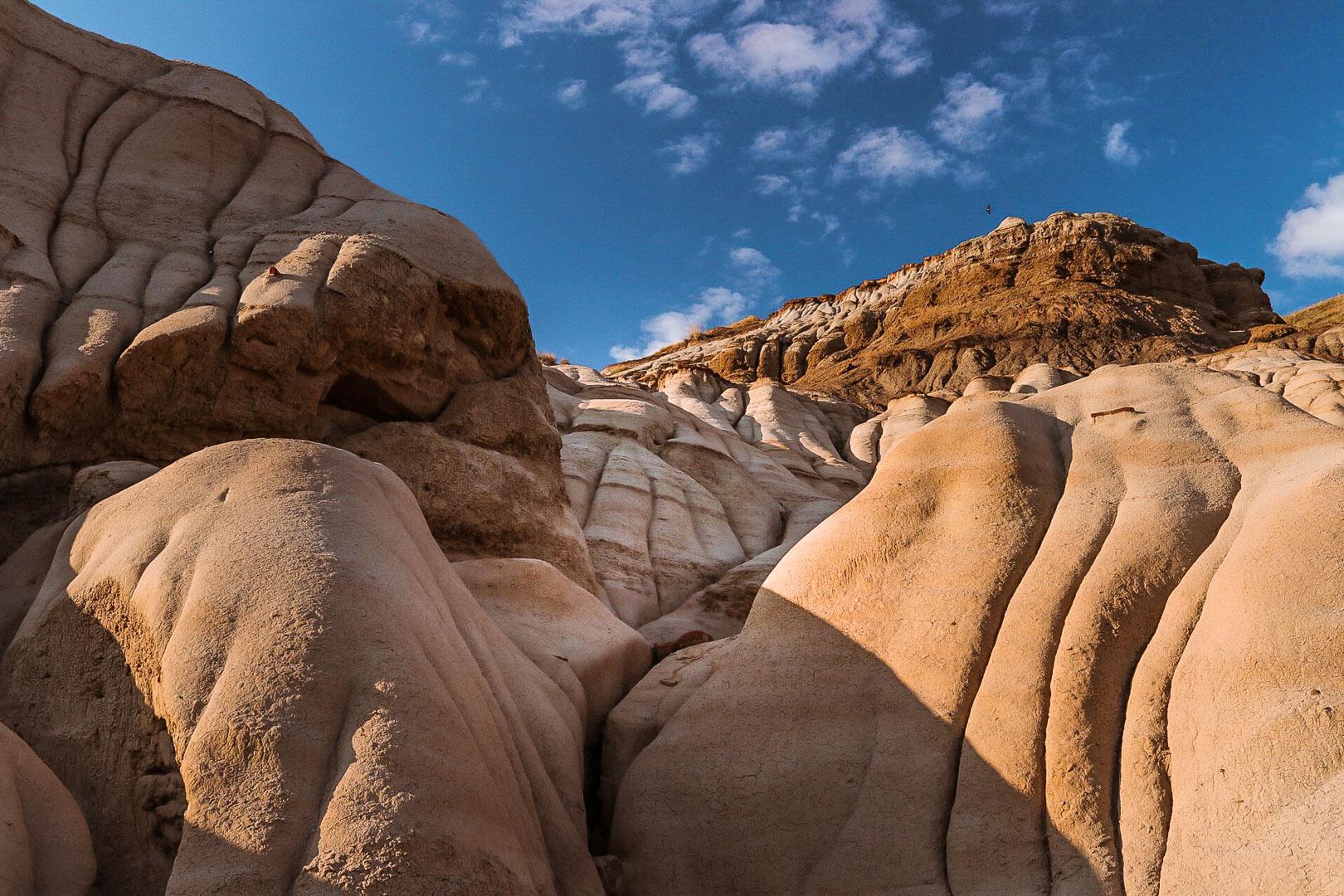

Saber tooth cats aren’t the only creatures hidden among the layers upon layers of sediment in the Badlands, though - fossils of all kinds of animals and plants including rhinoceroses and marine reptiles can be found in the park. Much to her surprise, this visitor’s discovery turned out to be an incredibly rare, well-preserved skull of a saber tooth cat. In 2010, a young park visitor came across a fossil at Badlands National Park and reported it to rangers. Saber Tooth Fossil at Badlands National Park. Geologists estimate that after another 500,000 years, the Badlands will have eroded away completely - so don’t wait a half million years to visit. Though this process began roughly 500,000 years ago, it is still going on now, eroding the Badlands at the rate of about one inch per year.

After all of these layers were deposited, waters flowing from the Black Hills began to wear into this sediment, carving valleys and other shapes into the landscape to create the Badlands as we know them today. Over tens of millions of years, layers of sedimentary rock were deposited in this region as the environment changed drastically from sea, to subtropical forest, to open savanna. The rugged rock formations that many people think of when they hear “Badlands” were not always here.

Photo by Andreas Eckert ( Its geologic formations are millions of years old. We hope these cool facts about the Badlands inspire you to start planning your own adventure. Today, the Badlands are a great place for hiking, fossil hunting, taking a scenic drive and spotting wildlife. Considering all that this park has to offer, you might be wondering - what’s so bad about the Badlands? The Lakota people dubbed this region “mako sica,” or “bad lands,” long ago because its rocky terrain, lack of water and extreme temperatures made it difficult to traverse. Near the Black Hills of South Dakota, Badlands National Park grants visitors access to 244,000 acres of scenic landscapes, incredible geological formations, diverse wildlife and much more.


 0 kommentar(er)
0 kommentar(er)
